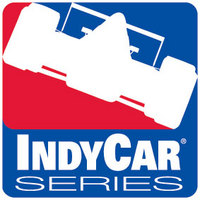QUALIFICATION PROCESS ENHANCED FOR ROAD AND STREET COURSES
The IndyCar Series will enhance its popular Firestone Fast Six qualifying format for road and street courses beginning with the series’ visit to St. Petersburg, Fla. April 4-6. Single-car qualifying, which previously preceded the Firestone Fast Six shootout, will be eliminated on road and street courses in favor of group sessions that will progressively narrow the field to the fastest six, who will then enter a 10-minute shootout for the pole. Preparations for qualifying at road and street courses will begin with two Friday practice sessions in which all cars will participate together for a total of 2 ½ hours. On Saturday morning, the cars will be randomly divided into two groups for a final practice session. Each group will get 30 minutes of practice time. Qualifying begins Saturday afternoon with the two groups competing for 20 minutes each. The fastest six cars from each group will advance to another round of qualifying while positions 13 down will be established for the race by the fastest laps turned by the remaining cars. The 12 advancing cars will then enter a 15-minute group qualifying session with all previous times erased. Following that session, the fastest six cars will advance to the Firestone Fast Six shootout while the remaining six cars will fill positions seven through 12 on the starting grid based on their fastest laps from that session. Once again, all times will be erased and the six finalists will battle for 10 minutes to win the PEAK Motor Oil Pole. “Qualifying for our road and street courses has been full of drama ever since we introduced the Firestone Fast Six concept in 2005,” said Brian Barnhart, president of the operations division of the Indy Racing League, the sanctioning body of the IndyCar Series. “Expanding the group format into several stages will add additional levels of intrigue and strategy that will keep fans entertained throughout.” The Honda Grand Prix of St. Petersburg also will mark the first time two off-season enhancements are used on a road/street course. IndyCar Series cars are now equipped with a paddle shift system and an optional variable-assist steering rack. Both improve driver safety. The paddle shift system allows drivers to keep both hands on the wheel while shifting, and the steering rack makes it easier to turn the wheel the farther it is turned. “The new qualifying format should be a hit with the fans,” said Al Speyer, executive director of Firestone Racing. “It adds increasing levels of excitement and unpredictability with each segment. It leads to the climactic Firestone Fast Six that has produced so much excitement since its inception at St. Pete three seasons ago, in part because the participants receive an extra set of new Firestone Firehawks for that session alone. We’re eager to see the new format unveiled this weekend.”
The 2008 IndyCar Series season continues with the Honda Grand Prix of St. Petersburg on April 6 on the streets of St. Petersburg, Fla. The race will be telecast live by ESPN and broadcast by the IMS Radio Network. A Spanish-language telecast of the race will be carried by ESPNDeportes. The IMS Radio Network broadcast also is carried on XM Satellite Radio and www.indycar.com. The 2008 schedule, one of the most diverse in all of motorsports, features races on ovals, permanent road courses and temporary street circuits, all broadcast worldwide through a comprehensive, long-term agreement with ESPN. All races in 2008 will be telecast in High Definition. The 2008 Firestone Indy Lights season continues April 5-6 with a doubleheader weekend at St. Petersburg. The race will be telecast at 2 p.m. (EDT) on April 10 by ESPN2.



